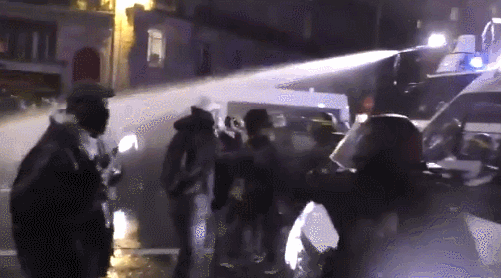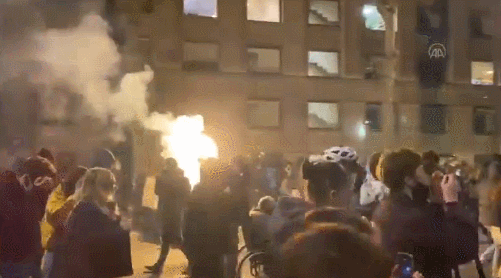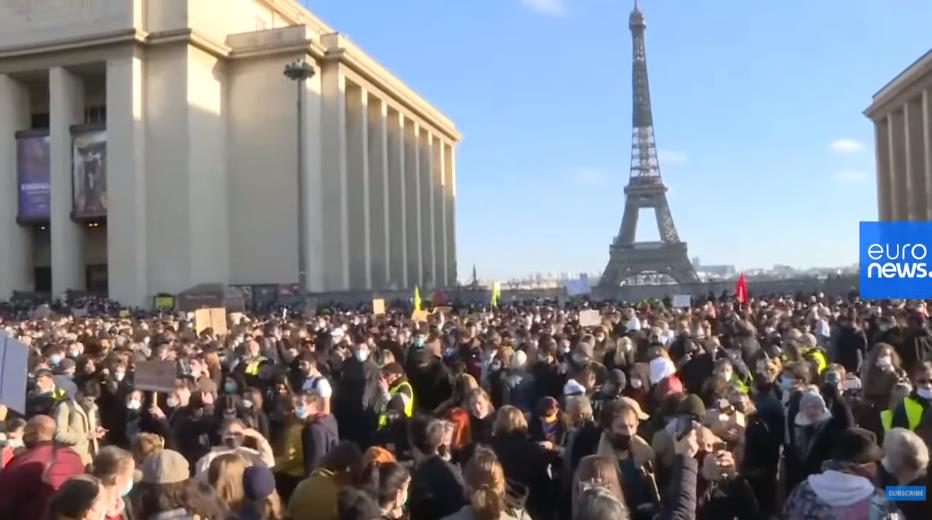France is in chaos again After the “yellow vest” made a comeback during the epidemic, Paris history teacher was “beheaded” by religious elements in the street, which not only intensified the contradictions between domestic and foreign countries and the Islamic world, but also led to several extreme religious-related extreme violence. Recently, thousands of French people have taken to the streets again because of a simmering security bill.
Thousands of people in Paris, France and other cities, encouraged by civil rights activists and journalists, took to the streets to protest against a bill under government consideration on Saturday (21st). If passed, the bill will include in section 24 of the new security bill that does not allow “disseminating photos affecting the physical and mental health of police on duty”, and violators will be fined up to 45,000 euros and imprisonment for one year.
A large number of opponents believe that the bill will infringe on the freedom of information and the media.
The French government believes that the bill can protect the police from violence, especially cyber violence. However, relevant critics said that if the bill is passed, journalists and witnesses who want to film the scene of law enforcement, especially the scene of the police response to the violent march, may be in danger and weaken their supervision of police violent law enforcement.
In Paris, thousands of demonstrators gathered in the Plaza de Trocadero next to the Eiffel Tower, shouting “Freedom, freedom…” and “Everyone wants to take the police down.” Some demonstrators covered their eyes with black bands, expressing that they “no longer enjoy the freedom of supervision and observation”.
The police dispersed the crowd with water guns. Towards the end of the demonstration, physical clashes (police and demonstrators) occurred in some areas, and one police officer was slightly injured.


The groups that encourage people to participate in the protests are Reporters Without Borders, Amnesty International France, and Human Rights League. Rights League), Union of Journalists and other organizations. There are many journalists and students in the protest crowd.


“We are not here to defend professional privileges, freedom of the press, and the freedom of journalists,” said Edwy Plenel. “We are here to defend fundamental rights, those of all.” He is the co-founder and editor of the investigative news network Mediapart.
It is reported that some anti-government “yellow vest” members also joined the march.
In the face of criticism, French Prime Minister Jean Casté said on Thursday (19th) that the bill will be amended to ensure that “there will be no infringement on freedom of information” and will only be targeted at those photos that “have obvious intentions” to harm police officers.
But the National Union of Journalists of France (SNJ) said the revision “do not change anything.”
Recently, the law enforcement violence of the French police has attracted renewed attention.
In July, when the bailiffs were enforcing the law, Cedric Chouviat, a 42-year-old deliveryman, was brutally suffocating to death. This scene was filmed and uploaded to the Internet by the crowd, which triggered a large-scale protest. This incident has been compared to the “George Freud case in France” by many media.

France has recently witnessed a series of extreme religious violence. After the knife-wielding murder at Nice Church at the end of October, French President Macron increased the number of soldiers to 7,000 to protect schools and religious sites.




